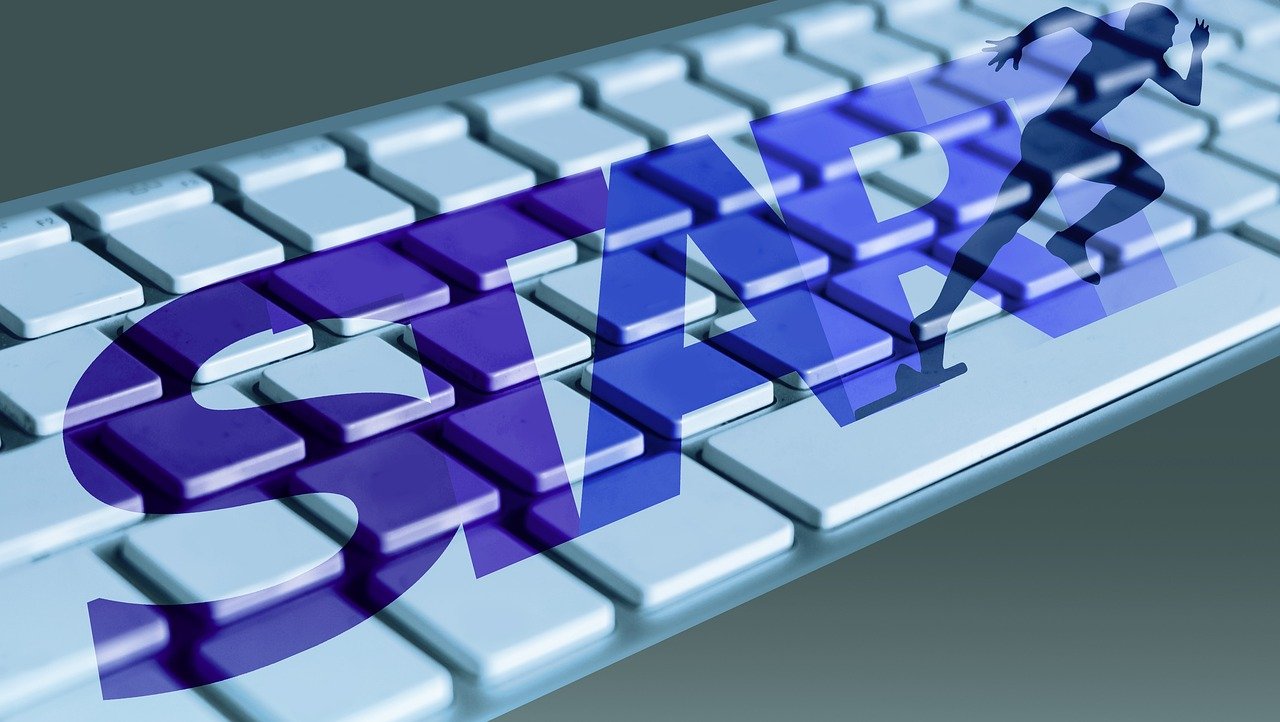Working from home (WFH) has transitioned from a perk to a widespread practice, reshaping the landscape of work and offering a blend of flexibility and productivity that many find irresistible. Whether you’re a seasoned remote worker or just considering taking the plunge, understanding the nuances of successful work from home strategies is crucial for thriving in this modern environment. This comprehensive guide will equip you with the knowledge and tools to optimize your WFH experience.
Setting Up Your Home Office
Creating a Dedicated Workspace
- Why it matters: Separating your work area from your personal space is paramount for maintaining focus and work-life balance. Blurring these boundaries can lead to burnout and reduced productivity.
- Practical examples:
Dedicated room: If possible, designate an entire room as your office. This offers the most separation and minimizes distractions.
Corner solution: If space is limited, a corner of a room can be transformed into a functional office. Use screens or bookshelves to create a visual barrier.
Mobile setup: For ultimate flexibility, consider a portable desk that can be easily moved and stored when not in use.
- Actionable takeaway: Evaluate your living space and identify an area that can be dedicated to work, even if it’s a small one. Invest in furniture and accessories that support your workflow.
Essential Equipment and Ergonomics
- Ergonomic chair: An adjustable ergonomic chair is a non-negotiable investment. Look for features like lumbar support, adjustable armrests, and seat height.
- External monitor: Using an external monitor significantly reduces strain on your neck and eyes, promoting better posture and productivity.
- Keyboard and mouse: Invest in ergonomic keyboard and mouse options to prevent repetitive strain injuries.
- High-speed internet: A reliable, high-speed internet connection is essential for seamless communication and efficient work.
- Headphones: Noise-canceling headphones are invaluable for blocking out distractions and participating in virtual meetings.
- Practical examples:
Invest in a standing desk converter if you find yourself sitting for extended periods.
Use monitor arms to position your screen at eye level.
Ensure proper lighting to reduce eye strain and improve focus.
- Actionable takeaway: Prioritize ergonomic equipment and a stable internet connection to optimize comfort, health, and productivity. Regularly evaluate your setup and make adjustments as needed.
Mastering Time Management and Productivity
Time Blocking and Task Prioritization
- Time blocking: Allocate specific blocks of time for specific tasks. This structured approach helps you stay focused and avoid multitasking.
- Task prioritization: Use techniques like the Eisenhower Matrix (urgent/important) to prioritize tasks effectively. Focus on high-impact activities that contribute to your goals.
- Practical examples:
Use a digital calendar (Google Calendar, Outlook Calendar) to schedule your work blocks.
Create a daily to-do list and rank tasks based on priority.
Break down large projects into smaller, more manageable tasks.
- Actionable takeaway: Implement time blocking and task prioritization strategies to manage your workload effectively and achieve your goals. Regularly review and adjust your schedule as needed.
Minimizing Distractions and Staying Focused
- Identify and eliminate distractions: Analyze your work environment and identify common distractions (social media, notifications, household chores). Implement strategies to minimize or eliminate them.
- Use productivity tools: Explore productivity apps and browser extensions that help you block distracting websites, track your time, and manage your tasks.
- Communicate boundaries: Clearly communicate your work hours to family members or roommates to minimize interruptions.
- Take regular breaks: Short, frequent breaks can improve focus and prevent burnout. Step away from your computer, stretch, or engage in a relaxing activity.
- Practical examples:
Use website blockers to limit access to social media during work hours.
Turn off notifications on your phone and computer.
Inform your family or roommates of your work schedule and request their cooperation.
Try the Pomodoro Technique: work in focused 25-minute intervals with short breaks in between.
- Actionable takeaway: Proactively minimize distractions and create a focused work environment. Communicate your boundaries and take regular breaks to maintain optimal productivity.
Communication and Collaboration in a Remote Setting
Utilizing Communication Tools Effectively
- Email etiquette: Craft clear, concise, and professional emails. Use subject lines effectively and avoid unnecessary replies.
- Instant messaging: Use instant messaging platforms (Slack, Microsoft Teams) for quick questions and real-time communication.
- Video conferencing: Leverage video conferencing tools (Zoom, Google Meet) for meetings, presentations, and team collaboration.
- Project management software: Utilize project management software (Asana, Trello) to track tasks, manage deadlines, and collaborate on projects.
- Practical examples:
Set clear expectations for response times on different communication channels.
Use video conferencing to build rapport and maintain a sense of connection with colleagues.
Utilize project management software to track progress and ensure everyone is on the same page.
- Actionable takeaway: Master the art of effective communication using a variety of digital tools. Set clear expectations and use the right channel for the right purpose.
Building and Maintaining Relationships with Colleagues
- Virtual coffee breaks: Schedule regular virtual coffee breaks or informal chats with colleagues to foster relationships and build camaraderie.
- Team-building activities: Participate in virtual team-building activities to strengthen bonds and improve communication.
- Active listening: Practice active listening during virtual meetings and conversations. Show genuine interest in what your colleagues have to say.
- Regular feedback: Provide and solicit regular feedback to improve communication and collaboration.
- Practical examples:
Organize a virtual team lunch or happy hour.
Participate in online games or activities with your colleagues.
Offer support and assistance to colleagues who are struggling.
- Actionable takeaway: Actively cultivate relationships with your colleagues through regular communication, virtual social events, and a willingness to help.
Maintaining Work-Life Balance and Well-being
Setting Boundaries and Disconnecting
- Establish clear work hours: Set specific start and end times for your workday and stick to them as much as possible.
- Create a shutdown ritual: Develop a ritual to signal the end of your workday (e.g., tidying your desk, writing a to-do list for the next day).
- Disconnect from technology: Turn off notifications and resist the urge to check emails or work-related messages after hours.
- Prioritize personal time: Make time for activities you enjoy outside of work, such as hobbies, exercise, and spending time with loved ones.
- Practical examples:
Set an alarm to remind you when to stop working.
Close your laptop and put it away at the end of the day.
Designate specific times for checking emails and avoid checking them constantly.
- Actionable takeaway: Establish clear boundaries between work and personal life to prevent burnout and maintain a healthy work-life balance.
Prioritizing Physical and Mental Health
- Regular exercise: Incorporate regular physical activity into your daily routine, even if it’s just a short walk or a few minutes of stretching.
- Healthy diet: Maintain a balanced and nutritious diet to fuel your body and mind.
- Sufficient sleep: Aim for 7-8 hours of quality sleep per night to improve focus, mood, and overall health.
- Mindfulness and meditation: Practice mindfulness or meditation to reduce stress and improve mental clarity.
- Seek support: Don’t hesitate to seek support from friends, family, or a mental health professional if you’re struggling.
- Practical examples:
Take a walk during your lunch break.
Prepare healthy meals and snacks in advance.
Establish a relaxing bedtime routine to improve sleep quality.
Use meditation apps or online resources to learn mindfulness techniques.
- Actionable takeaway: Prioritize your physical and mental health by incorporating healthy habits into your daily routine. Don’t be afraid to seek support when needed.
Optimizing Your Work From Home Finances
Tax Deductions for Home Office Expenses
- Understanding IRS rules: Familiarize yourself with the IRS guidelines for deducting home office expenses. There are specific requirements that must be met.
- Calculating deductible expenses: You can deduct a portion of expenses related to your home, such as rent, mortgage interest, utilities, and insurance. The amount you can deduct depends on the percentage of your home used exclusively for business.
- Simplified method: The IRS also offers a simplified method for calculating the home office deduction, which allows you to deduct a standard amount per square foot of your home office.
- Keeping accurate records: Maintain detailed records of all expenses related to your home office, including receipts and documentation of the square footage of your workspace.
- Practical examples:
If your home office occupies 10% of your home’s total square footage, you can deduct 10% of your rent or mortgage interest.
Using the simplified method, you can deduct $5 per square foot of your home office, up to a maximum of 300 square feet.
- Actionable takeaway: Consult with a tax professional to determine the best way to maximize your home office deductions. Keep accurate records of all expenses to support your claim.
Budgeting and Saving Strategies
- Reduced commuting costs: Working from home can save you money on commuting expenses, such as gas, tolls, and public transportation.
- Lower clothing costs: You may also save money on clothing expenses, as you won’t need to purchase as many professional outfits.
- Increased utility costs: However, your utility bills may increase as you spend more time at home.
- Creating a budget: Develop a budget that takes into account these changes in your expenses.
- Saving strategies: Use the money you save on commuting and clothing to pay down debt, invest, or save for other financial goals.
- Practical examples:
Calculate how much you save on gas each month by working from home.
Allocate a portion of your savings to a retirement account or emergency fund.
- Actionable takeaway: Create a budget that reflects your new work-from-home lifestyle. Use the savings you generate to achieve your financial goals.
Conclusion
Working from home offers incredible opportunities for flexibility, productivity, and improved work-life balance. However, success hinges on implementing the right strategies. By creating a dedicated workspace, mastering time management, fostering effective communication, prioritizing well-being, and optimizing your finances, you can thrive in the remote work environment. Embrace these tips, adapt them to your unique circumstances, and unlock the full potential of working from home.



